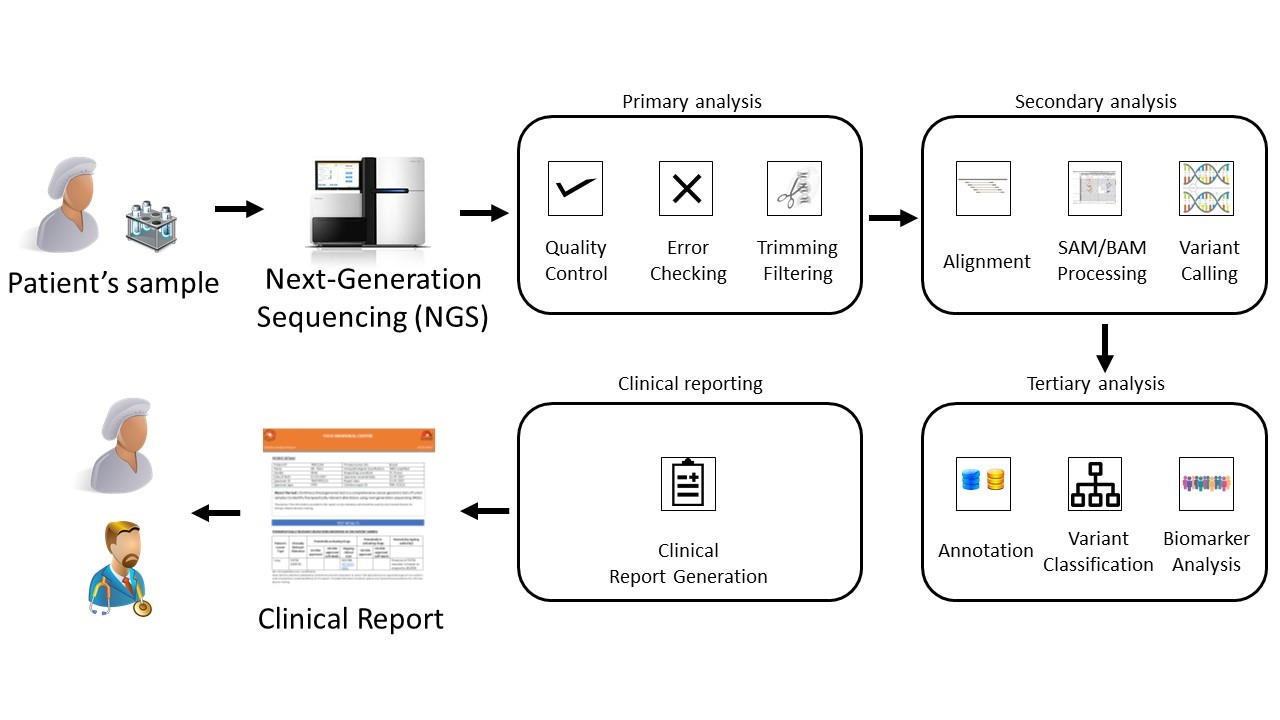ClinOme -- a User Friendly Computational Tool to Generate Automated Clinical Reports from Raw NGS Data
Researcher:Pratik Chandrani, PhD
Dr. Kumar Prabhash, Tata Memorial Hospital, Mumbai
Dr. Sudeep Gupta, ACTREC-TMC, Navi Mumbai
Dr. Anuradha Choughule, Tata Memorial Hospital, Mumbai
We have developed ClinOme, a Graphical User Interface (GUI) based automated tool for analysis of raw NGS data followed by comprehensive clinical report generation. ClinOme automates quality check, primary, secondary and tertiary analysis of raw NGS data followed by generation of report that can be easily understandable by the clinician. It integrates the therapeutic guideline available through FDA/NCCN guidelines, NCBI, MSKCC, Washington University, Illumina and other resources. It provides easy to interpret categorization of genomic alterations along with approved as well as experimental therapeutic options for each responsive and resistant genotype-drug combination. The output of ClinOme analysis consist of a report with detailed patient centric genotype to help design informed therapeutic option. The output report also consists links to the specific ongoing clinical trials, gene wise coverage statistics and allelic frequency of the genomic variant.

Detailed workflow of patient sample analysis through NGS and ClinOme Patient DNA and RNA are collected for next-generation sequencing (NGS) based analysis of therapeutically relevant alteration in the tumour. NGS raw data is provided as an input to the ClinOme, a computational biology tool developed in-house to perform primary, secondary and tertiary analysis followed by comprehensive clinical report generation. Primary analysis module assesses the raw data quality followed by trimming and filtration if necessary with automated parameter identification. Secondary analysis module uses quality checked raw data for alignment to the reference genome followed by identification of single nucleotide variants and small insertions/deletions using four independent algorithms. The variants are then passed through the tertiary analysis module for annotation, classification and clinical biomarker analysis. The reporting module of ClinOme finally generates a fixed format clinical report describing the observed biomarkers and their therapeutic relevance. The report goes back to the patient and consulting clinician for the therapeutic decision making.